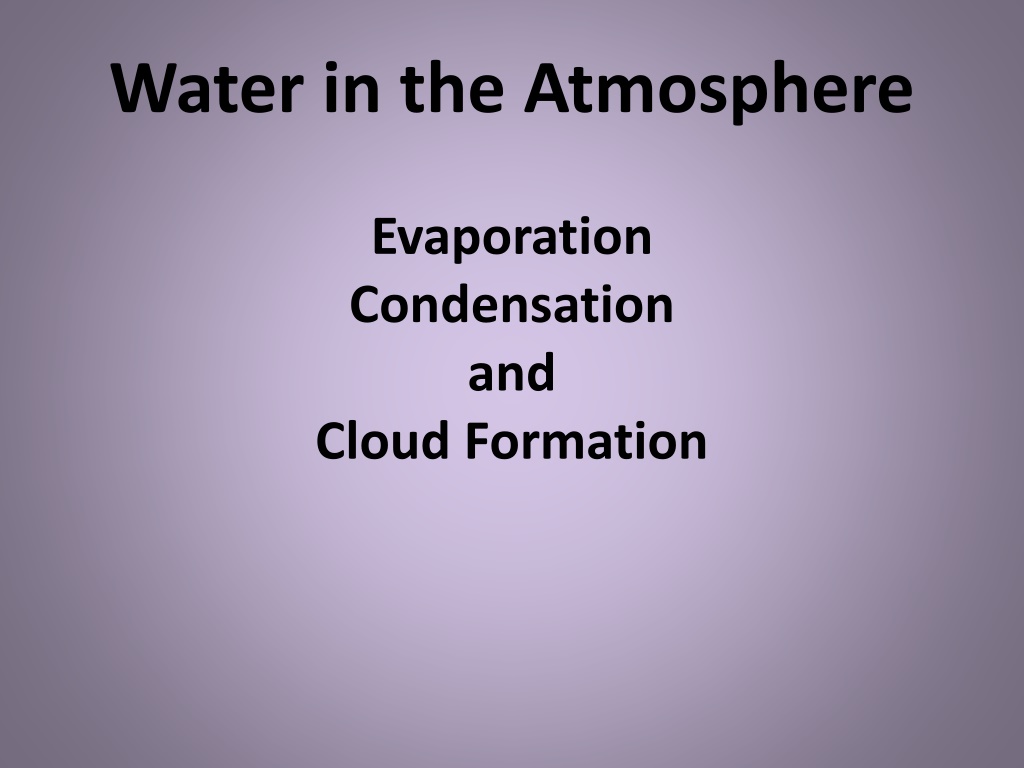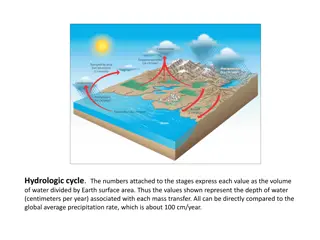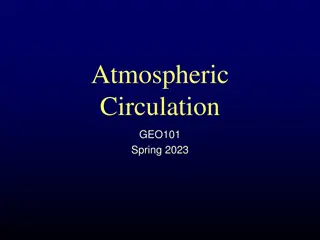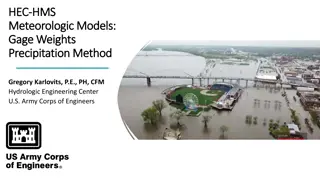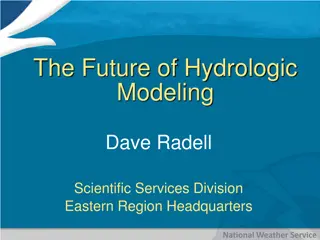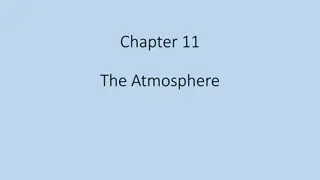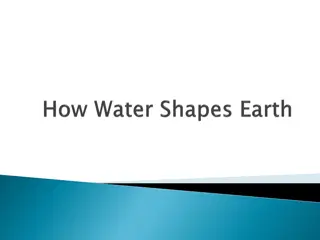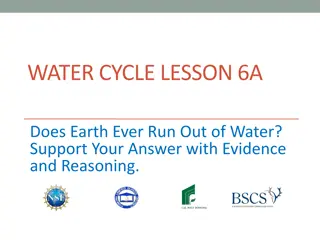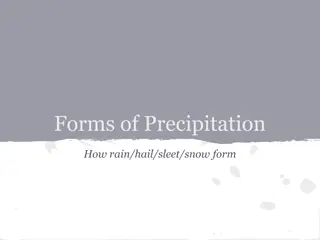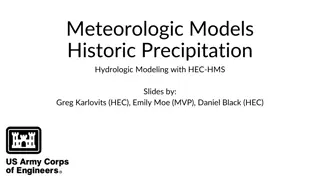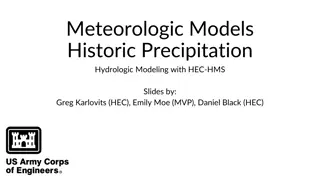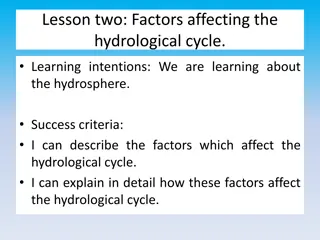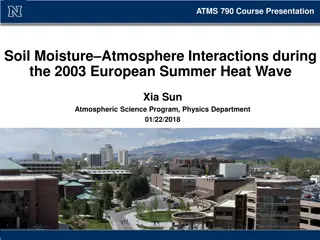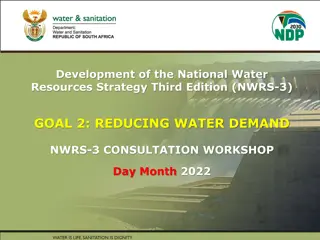Understanding the Hydrologic Cycle and Water in the Atmosphere
Exploring the intricate processes of evaporation, condensation, and cloud formation in the atmosphere, the hydrologic cycle's closed system, and the impact of global warming on Earth's water resources. Dive into the essential concepts of water absorption, redistribution of energy, humidity, and the relationship between temperature and water vapor capacity.
Download Presentation

Please find below an Image/Link to download the presentation.
The content on the website is provided AS IS for your information and personal use only. It may not be sold, licensed, or shared on other websites without obtaining consent from the author. Download presentation by click this link. If you encounter any issues during the download, it is possible that the publisher has removed the file from their server.
E N D
Presentation Transcript
Water in the Atmosphere Evaporation Condensation and Cloud Formation
Hydrologic Cycle Hydrologic cycle: circulation of water over earth: A closed system! Solid (ice) goes to liquid (oceans/lakes/rivers), liquid to vapor (gas), vapor to liquid (tiny droplets/clouds) or solid (SOME CLOUDS ARE ICE!), droplets combine to form rain (or snow).
Earths Water Resources How might global warming or cooling alter the image below?
Hydrologic Cycle Hydrologic system Water changes of state = Redistribution of energy
Water in the Atmosphere Water absorbs and reflects energy Water Budget: Total quantity of water remains the same. Any deficit must balance gains Heat Budget: Latent Heat (energy from evaporation) Energy gained from evaporation is released during condensation to form clouds Heat transfer involved with evaporation and condensation is huge! The energy stored and transferred in phase changes provides the power for Earth s storms (think hurricanes)
Water in the Atmosphere Saturation: air at a certain temperature holds all of the water vapor possible. It has reached capacity. Dew Point: the temperature at which the air becomes saturated. As the dew point and the air temperature get closer the humidity increases.
Check page 14 of the ESRT: the average temperature in the troposphere goes from 15 C at the bottom to -55 C at the top! How much water vapor can the air hold at that temperature?
Water in the Atmosphere Humidity: Amount of water vapor in the air. Different ways to measure Humidity: Specific Humidity Relative Humidity (R.H.)
Condensation Condensation: occurs when air temperature reaches the dew point. The R.H. becomes 100% (saturated). Condensation requires the presence of Condensation Nuclei. These provide a surface for the water vapor to condense on. Fog and Clouds form when water vapor condenses and a large number of these droplets form a mass.
Precipitation Processes Relative sizes of: Raindrops cloud droplets condensation nuclei Precipitation occurs when droplets become too large to be suspended by wind
Cloud Formation As you go higher in the earths troposphere, temperature decreases Therefore the air capacity for water vapor also decreases and the R.H. INCREASES! Even as specific humidity decreases! When the R.H. reaches 100% and condensation nuclei are present condensation (cloud formation) starts
CLOUD LAB Look at the chart on page 1! What are the two lines? Dashed lines (air temp) is the same as Dry Adiabatic Lapse Rate Solid Lines (Dew Point) is the same as Wet Adiabatic Lapse Rate
Climate Effect of Condensation Orographic Lifting air is forced upward due to land barriers (mountains, plateaus) Rising air is cooler than sinking air Condensation of moisture in the rising air provides the extra heat Windward climate is cool and humid Leeward is warm and dry
Fog Fog is a cloud at the ground surface. Types of Fog: Radiation Fog Advection Fog Upslope Fog
